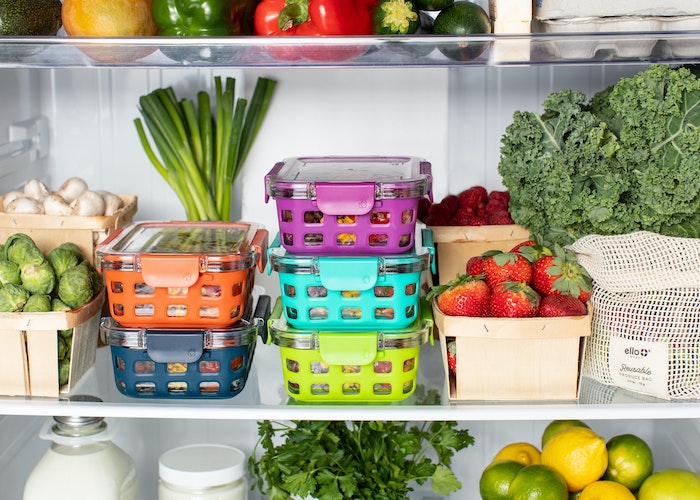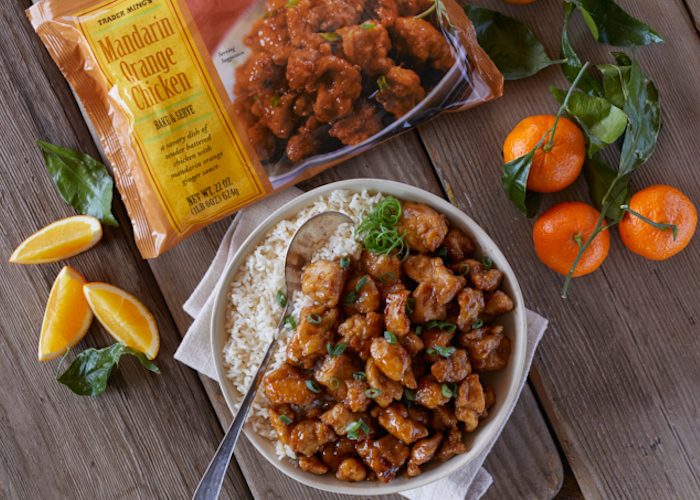How I Cut My Grocery Spending By Over 60% In Two Months (Without Starving)

In January, I began auditing my monthly expenses the old-fashioned way: I got a pen and a home budget workbook, started keeping all my receipts, recording every expense and then totaling them up at the end of the month. After the first month, my total amount spent on groceries was a whopping $334 for one person — way more than I thought I was spending. By the end of March, I had cut my grocery bill down to a much more reasonable $110, or about $28 per week. Here are some tips on how I did it, without starving or switching to a ramen noodle diet.
1. Spending Awareness
The number one thing that prompted me to find ways to cut my grocery bill was being aware of how much I was really spending. Without ever actually keeping track of my spending, I thought I spent about $50 per week on groceries for myself, because that was my budget in college. I just assumed that my spending habits hadn’t changed much since then (I have a full-time job now), but my assumptions are almost always wildly inaccurate. Keeping my receipts and tracking my actual spending helped me realize that I needed to make some changes.
2. Cooking Doesn’t Have to be Fancy or Complicated
Before I started auditing my expenses, I relied on a lot of convenience foods to save myself the time and labor of cooking. I honestly believed that I hated cooking and would forever be horrible at it. I finally realized that my cooking skills were not fatally flawed — I was just lazy. Cooking, like any skill, takes practice. You don’t need to be a master chef to cook a decent meal, and you don’t need to go out and buy a gourmet cookbook. You can find a plethora of free recipes online that you can prepare at home with basic foods like fresh fruits and vegetables, grains such as rice and quinoa, and cheap proteins like beans, eggs, and ground beef.
My favorite things to cook, especially on a busy night, are one-pot dishes. There are a TON of these online, but with some broth, veggies, beans and a grain, you can easily invent your own recipes. You basically just dump everything in a pot, simmer it until done, and serve! A hot, home-cooked meal on the cheap.
3. Learn to Love Leftovers
The thing about leftovers is that people seem to either love them or hate them, but they can be quite handy when you’re on a budget. In fact, I find that many dishes taste better on day two, when all of the flavors have had time to marinate. Often, I will use whatever is left over from dinner as my lunch for work the next day. Another idea if you don’t like to repeat meals consecutively is to freeze your leftovers for a quick and easy meal later on. Bonus tip: store them in a freezer-to-microwave container for dinner in a cinch!
4. Waste Not, Want Not — Storage Counts!
Another thing that shocked me was how much food I was throwing out because it expired before I used it (I’m looking at you, baby spinach). It’s a good idea to check expiration dates every few days to keep in mind what you need to use up before it goes bad. Move those items to the front of your fridge or pantry and try to make recipes that call for them before you purchase more groceries. Many foods can be frozen if you don’t think you’ll have time to use them.
To keep produce fresh, use airtight glass containers. I have a whole shelf of mason jars that have saved me tons of money by extending the life of fresh fruits and veggies such as spinach and berries. Normally, I would have a week or less to use them before I had to throw them out, but by using glass jars, I have been able to keep those kinds of foods fresh for up to a month — but, of course, always inspect your perishables before consuming.
5. Shop at Discount Grocery Chains
In February, discount grocery chain Aldi opened a new location in my city, and I love it! It’s clean, organized, and easy to navigate. Discount stores like this one are able to keep costs low due to their minimalistic facilities, streamlined staff, and low production costs. Most of the products are the store’s own brand, which cuts out the price markup of national brands, and I find the quality of the products to be very much the same.
6. Buy in Bulk, but Not for Everything
I like to buy staple foods with a long shelf-life, such as onions and potatoes, in bulk. The unit cost of bulk items is usually lower due to less packaging. However, I don’t buy everything in bulk — be mindful of how much you need versus how long the product will last.
7. Really “Treat” Yourself
Treats are important, but they can seriously amp up your grocery bill if you’re not careful. For example, I LOVE dark chocolate, but I don’t buy it every week, because it is rather expensive. Try to keep luxury foods to a minimum and instead of making them everyday staples, treat them as, well, treats!
8. Healthy Doesn’t Mean Expensive
Rice and beans are great sources of carbs and protein, and they are also some of the cheapest foods to buy. They are two whole, healthy foods that can be prepared many different ways, as sides to other meals or even as the main dish. Don’t be afraid to experiment! Not only are they super versatile, they also have a great shelf life when stored properly. But you don’t have to become a vegetarian to eat healthy on the cheap. Look for specials in the meat department, too. Ground beef is much cheaper than steak, and it can be prepared any number of ways — it’s not just for hamburgers! Also, slow cookers are a great way to prepare tough, inexpensive cuts of meat, since the slow-cooking process makes them nice and tender.
9. Skip the Garnishes
Many recipes call for unnecessary extras to make the food more visually appealing, but I’m not into spending money on a sprig of mint or parsley that serves little purpose. Save the cash.
10. Set A Goal
When I realized I was spending way more money than I wanted to on groceries, I asked myself what a more reasonable — and realistic — number would be. Thinking back to my college days, I knew I could get by on $50 a week, so I set a monthly goal to spend no more than $200 on groceries the next month. Having a number in mind helps to keep you on track, especially if you shop regularly. I was pleasantly surprised to see that I came in below my goal the first month (cutting my previous $334 bill in half), and even lower the next month. Thinking of it as a challenge gave me added motivation.
The most important things to keep in mind when grocery shopping are your personal needs and preferences. Find what works for you, set a reasonable limit, and go from there! Everyone’s dietary needs are different, but it is definitely possible to eat healthy and delicious food on a budget. Happy shopping!
Annie Zomaya is a freelance writer based in Kentucky. While she spends most of her time chasing after her husky-mix puppy, she also loves reading, hiking, kayaking, and travel. You can follow her adventures on Twitter @anniezomaya.
Image via Unsplash




